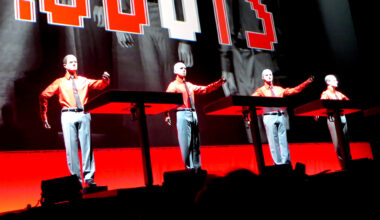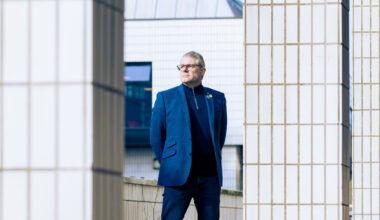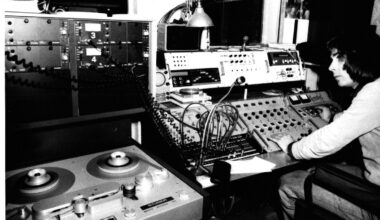We visit the remarkable new ‘ROBOTS’ exhibition at London’s Science Museum and find ourselves asking what is our relationship with all these captivating human-like machines
Everyone loves robots, especially humanoids. The metal machines built in our own image have long captured the imagination. But who knew they have a history that stretches back over 500 years?
‘Robots’, which runs until September before heading on tour taking in Manchester, Newcastle, Edinburgh and beyond, is a unique collection of over 100 bots, from a 16th century mechanical monk, to stars of the silver screen and the machines of today’s industry and research labs. While the robots themselves are impressive (there are 16 working units to marvel at), the show throws up more questions about us than them.
“We are fascinated by ourselves,” offers Ben Russell, curator of Mechanical Engineering at the Science Museum and the lead curator on ‘Robots’, as we wander round the show. “The medical galleries here are some of our most popular attractions because people are fascinated by their bodies, what happens when it goes wrong and how you fix it. In way, a robot is a mirror for us, which is intriguing when you think how has that changed over time.”
Which is the central premise, ‘Robots’ in a nutshell. The exhibition, which has been five years in the making, explores humanity’s long quest to re-imagine ourselves, yet it isn’t about how we build robots, it’s about why. In the words of Ian Blatchford, Director of the Science Museum Group, the show offers “some unsettling truths about us, our hopes, fears, dreams and delusions.”
As you stand in front of many of these machines, you do indeed run through the range of emotions. The Silver Swan, dating from 1773, isn’t what you’d think of a robot, but the automation, which is controlled by three separate clockwork mechanisms, is totally captivating as we watch it attempt to catch little robot fish jumping in the robot water around it. We ponder that Mark Twain saw this very same swan at the Paris Exhibition of 1867 and even mentions it in ‘The Innocents Abroad’, which makes our head hurt a little.
“It makes us reflect on our endless fascination with replicating living things in mechanical form,” offers Ben, helpfully.
But it isn’t all jolly-jolly. Take the frightening thought of future warfare as you square up the T-800 killing machine from ‘The Terminator’ films as an example.
“People expect robots to be these lovely big shiny guys,” says Ben, gesturing towards the replica of Eric, the UK’s first robot built by Captain Richards and AH Reffell in 1928. “Very often they’re effectively showmen and performers, and then you’ve got The Terminator… which casts a slight doubt.”
The counterweight is iCub. Developed at the Italian Institute Of Technology, they’re robot toddlers capable of discovering the world like children, the aim is to help researchers explore how we learn.
“A lot of the robots are deliberately child-sized,” explains Ben. “Honda’s Asimo started off as this massive thing then they gradually start to shrink it down because then, of course, it become less intimidating.”
A particular highlight is the captivating YuMi dual-arm collaborative robot, created by Swiss firm ABB Robotics. This graceful industrial robot is certified safe for working alongside people in its role mainly assembling electronics. It also happens to make, and throw, a mean paper aeroplane, which is mighty impressive.
“There’s something magical about robots when you see them move,” says Ben. “When you see the subtleties of their behaviour it’s fascinating. Just think about the movement of throwing a paper dart, there’s so many elements that are simultaneously in your mind without even realising it. Mechanising that is a massive challenge.”
Living and breathing all this for the last five years as the exhibition took shape and then came to life, we wonder if Ben has a favourite. Seems we’ve stopped in front of it.
“I love Maria,” he says, as we peer at the impressive replica of Maria from ‘Metropolis’, built by Toronto prop makers, Kropserkel Inc, based on the original drawings by designer Walter Schulze-Mittendorff. “She was the first blockbuster robot, created for Fritz Lang’s film in 1927. There’s so many ideas of what a robot should be, everyone kind of expects them to be big and masculine, but she really sets people up for what they think a robot should be. She’s a remarkable figure and seems to be in so many ways to be timeless.”
Inspiration for her look was drawn from, at the time, recently discovered Pharaohs in Egypt and then, fast forward 50 years or so, and Maria herself went on to inspire other sci-fi creations.
“When George Lucas started working on ‘Star Wars’,” says Ben, “he took a picture of Maria into the design studio when they were working on C-3PO and said, ‘I want a male version of that’.”
Quite why C-3PO couldn’t have been female too throws up a whole new set of questions.
“There’s so many issues like that around robots,” smiles Ben. “It’s all good fun really, we could talk about it for hours.”
I assure him that we do. Often.






